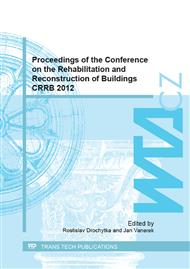p.113
p.123
p.130
p.139
p.146
p.153
p.158
p.165
p.172
Lightweight Artificial Aggregate Based on Fly Ash for New Rehabilitation Materials
Abstract:
During rehabilitation work are often strict requirements on the use of high quality lightweight materials, including aggregate. Due the constantly increasing social pressure on the optimal use of secondary raw materials is therefore most appropriate to exploit the potential of fly ash as mineral residue from the combustion of ground coal in power plants. Especially filter fly ash has proven to be an adequate substitute for traditional materials in the past. This article deals with the evaluation of physical and mechanical properties of cold-consolidated pellets based on conventional and fluidized fly ash with various cement addition.
Info:
Periodical:
Pages:
146-151
Citation:
Online since:
May 2013
Authors:
Keywords:
Price:
Сopyright:
© 2013 Trans Tech Publications Ltd. All Rights Reserved
Share:
Citation:


